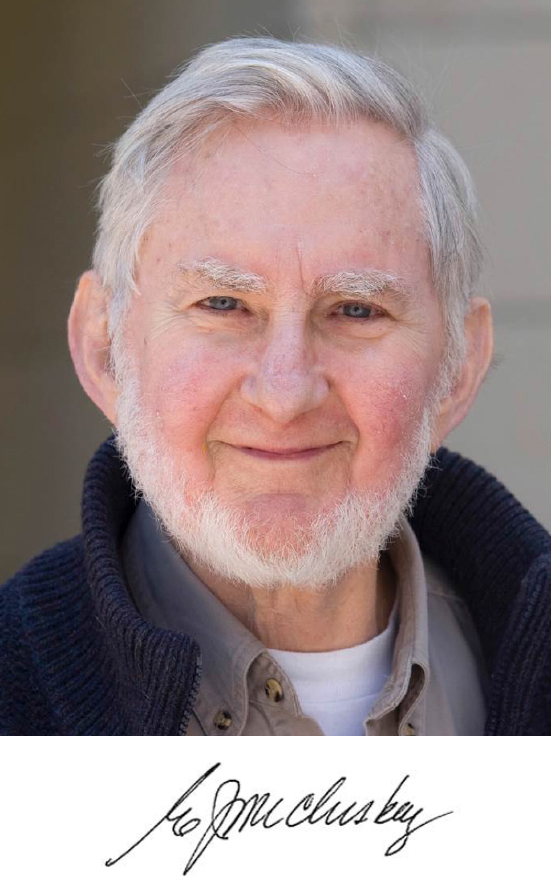EDWARD J. McCLUSKEY
1929–2016
Elected in 1998
“For logic design, computer engineering, and engineering education.”
BY JEFFREY D. ULLMAN
EDWARD JOSEPH McCLUSKEY was a leader in digital electronics and professor of electrical engineering and of computer science at Stanford University. He died February 13, 2016, at the age of 86.
Ed was born October 16, 1929, in New York City. He graduated from Bowdoin College in 1953 and in 1956 earned his doctorate in electrical engineering from the Massachusetts Institute of Technology, where he developed what became known as the Quine-McCluskey algorithm for the design of minimum-cost digital logic circuits. This was the first systematic approach to logic circuit design and is still used and taught today.
Ed began his professional career in 1955 at Bell Laboratories before moving in 1959 to the Department of Electrical Engineering at Princeton University, where he built a graduate research program in digital systems. He also established Princeton’s Computer Center in 1962 and was its first director. He was promoted to full professor in 1963.
In 1966 he left to become professor of electrical engineering and computer science at Stanford University, where, in 1969, he founded the Digital Systems Laboratory (later Computer Systems Lab), at the time one of the five divisions of the Electrical Engineering Department. He served as director of
this laboratory until 1978. In addition, he initiated Stanford’s “Computer Forum” industrial affiliates program and served as its director from 1968 to 1978. And in 1976 he organized his personal research program into the Center for Reliable Computing, which was the focus of much of his research program at Stanford.
During his career at Princeton and Stanford, he was doctoral advisor to 75 students, several of whom are now members of the NAE and many of whom hold key positions in industry and academia.
In addition to his publication of a major book in the field, Introduction to the Theory of Switching Circuits (McGraw-Hill, 1966), Ed wrote widely cited papers on topics such as design of circuits for testability, hazards in logic circuits, probabilistic testing, on-board self-testing, and generation of test sets.
He was made a fellow of the Institute of Electrical and Electronics Engineers (IEEE) in 1965 and of the Association for Computing Machinery (ACM) in 1994. He is also recognized as the father of the IEEE Computer Society, created in 1970 thanks to his efforts. He was the society’s first president (1970–1971).
Ed received many awards and honors: the IEEE’s John von Neumann Medal in 2012 for “fundamental contributions that shaped the design and testing of digital systems,” Emanuel Piore Award in 1996 for “pioneering and fundamental contributions to design automation and fault tolerant computing,” and Centennial Medal and Computer Society Technical Achievement Award in Testing, both in 1984; the EuroASIC 90 Prize in 1990 for “outstanding contributions to logic synthesis”; and in 2008 the ACM-SIGDA Pioneering Achievement Award. His contributions to education were recognized by the ACM-SIGCSE Award in 1990 and IEEE Taylor Booth Award in 1991. He received honorary doctorates from the University of Grenoble and his alma mater, Bowdoin College.
Ed was known for his unusual sense of humor and eccentricities, such as his collection of exotic hats, which he wore periodically. He is also remembered for the green school bus that he bought and used to transport his family from Princeton
to Stanford. The bus became a fixture at Stanford and was used for camping trips for many years.
Ed was married to Roberta Jean Marie Erickson and they had six children: Edward Robert (Ted), Rosemary, Therese, Joseph, David, and Kevin. They divorced and he later married Lois Thornhill. He is survived by Lois and five of his six children (Rosemary died in 2011) as well as 11 grandchildren and one great-grandchild.
Much loved by his students and colleagues, Ed is greatly missed.





